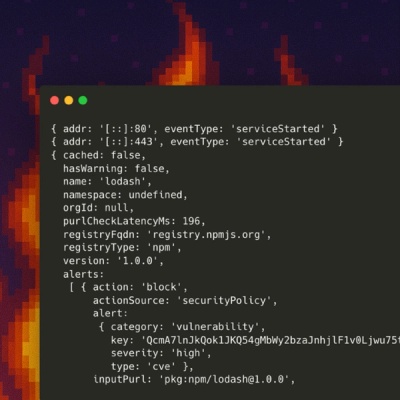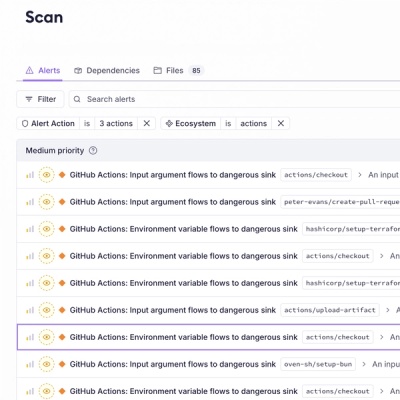
Product
Introducing Socket Firewall Enterprise: Flexible, Configurable Protection for Modern Package Ecosystems
Socket Firewall Enterprise is now available with flexible deployment, configurable policies, and expanded language support.
ink-progress-bar
Advanced tools
Progress bar component for Ink.
$ npm install ink-progress-bar
See examples/basic.js for an example app. Run it with ./examples/run basic.
import React, { Component } from 'react';
import { Color } from 'ink';
import ProgressBar from 'ink-progress-bar';
class MyProgress extends Component {
render() {
return (
<>
<Color red>
<ProgressBar
left={text.length}
percent={this.state.done / TASKS}
/>
</Color>
</>
);
}
}
All props except the ones below are passed to <Text> as-is.
Type: string
Default: '█'
The character to use for each step.
Type: number
Default: 0
The percentage (between 0 and 1) of progress.
Type: number
Default: 0
The number of characters to subtract from each side of the progress bar. Commonly used if you want text before/after the progress bar on the same line. See examples/basic.js for an example.
MIT © Frankie Bagnardi
FAQs
a customizable progress bar for ink
The npm package ink-progress-bar receives a total of 9,163 weekly downloads. As such, ink-progress-bar popularity was classified as popular.
We found that ink-progress-bar demonstrated a not healthy version release cadence and project activity because the last version was released a year ago. It has 1 open source maintainer collaborating on the project.
Did you know?

Socket for GitHub automatically highlights issues in each pull request and monitors the health of all your open source dependencies. Discover the contents of your packages and block harmful activity before you install or update your dependencies.

Product
Socket Firewall Enterprise is now available with flexible deployment, configurable policies, and expanded language support.

Security News
Open source dashboard CNAPulse tracks CVE Numbering Authorities’ publishing activity, highlighting trends and transparency across the CVE ecosystem.

Product
Detect malware, unsafe data flows, and license issues in GitHub Actions with Socket’s new workflow scanning support.